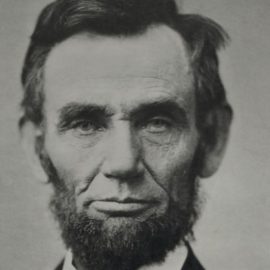
What was Jordan Belfort’s early life like? When did Belfort build Stratton Oakmont?
Though Belfort’s memoir The Wolf of Wall Street starts at the height of his power, he provides snippets throughout that describe his life before Wall Street and illustrate how success affected him. He takes a look at his early days and his lifestyle once he’d achieved massive wealth.
Keep reading to learn more about the man behind Stratton Oakmont.
Meet Jordan Belfort
The Wolf of Wall Street paints a picture of Jordan Belfort’s early life—his father was at turns abusive and caring, and his mother did nothing to protect him. As a child, he was always at the top of his class, but even then he was plagued by insomnia, anxiety, and a mind that wouldn’t stop racing. In college, he dropped out of dental school when he learned that dentistry was no longer a path toward guaranteed riches. He started a business in food services that failed, and he also met his first wife—whom he’d cheat on and later divorce—and eventually entered the stock trading game at the firm LF Rothschild in 1987 during the heyday of the bond securities market.
| Childhood Trauma and Adult Dysfunction Belfort doesn’t blame his parents for his actions as an adult, but it’s likely that his childhood shaped his adult life, especially if his parents were as emotionally volatile and distant as he suggests. In Adult Children of Emotionally Immature Parents, psychologist Lindsay Gibson says that emotionally underdeveloped parents expect their child to intuit their feelings, then act out in anger if they don’t get what they want, much as Belfort’s father did with him, even into adulthood. Children of such parents often suffer from chronic stress as Belfort did, since they never know when the next outburst will come. For Belfort, being identified early in life as an unusually bright student may have brought its own host of problems. In The Drama of the Gifted Child, Alice Miller pointed to emotional difficulties in adulthood as a result of linking a child’s self-worth to their capacity for achievement. More recent studies show that so-called gifted children feel emotions more intensely than their peers, an experience that can be misconstrued as emotional immaturity and manifest as behavioral problems in response to isolation and parental expectations. |
By 1993, when Belfort’s narrative begins, he’d established his own investment firm, Stratton Oakmont, situated on Long Island, New York, not Wall Street itself. Even though he’d remarried—to the model Nadine Cardi—his life was filled with parties, prostitutes, and drugs. Belfort contends that sex and substance abuse were common ways for Wall Street traders to cope with their stressful jobs.
(Shortform note: While the illicit behaviors that Belfort cites as normal may not be uncommon on Wall Street, neither are they universal. In Liar’s Poker, Michael Lewis writes about his experiences at Salomon Brothers, the firm that birthed the bond securities market that Belfort cut his teeth on. While at Salomon, Lewis recounts that bond brokers’ vices of choice were bullying, pranks, and gluttony—rather than sex and drugs—although Salomon’s culture of machismo and excess mirrored what Belfort instituted at Stratton Oakmont, along with the firm’s process of indoctrinating new recruits into its strong-arm sales practices and general philosophy toward money, as we will cover next in this guide.)
The Long Island Boys’ Club
Belfort wasn’t alone in the wild life he led—he cultivated an organizational culture to embody it. Being a member of his Stratton Oakmont team wasn’t just about making money, but also spending it in the most outlandish ways possible. Belfort details the example he set for Stratton Oakmont’s cadre of brokers, the type of lifestyle he encouraged them to lead, and how he used that lifestyle to control them. Thanks to the electronic NASDAQ stock exchange, it was no longer necessary for investment firms to be physically located on Wall Street, so Belfort founded Stratton Oakmont on nearby Long Island in 1989.
(Shortform note: Launched in 1971, the NASDAQ allowed brokers to trade stocks electronically and eliminated much of the inefficiency of the older, in-person trading system. The NASDAQ traded many more companies’ stocks than were commonly found on the New York Stock Exchange, and beginning in 1975 it listed the Initial Public Offerings of companies going public.)
To fill Stratton Oakmont’s desks, Belfort says he deliberately recruited young, malleable traders and indoctrinated them into his way of thinking, the tenets of which were as follows:
- Money is the solution to every single problem.
- It’s vital to make money while you’re young and still able.
- If you act like you’re already rich, then the universe will make it so.
| Money as Both a Solution and a Problem The third of Belfort’s principles above taps into a concept that’s become known as the “Law of Attraction.” In The Secret, Rhonda Byrne popularized this idea, asserting that your thoughts and attitude affect the universe around you so that you will attract whatever’s on your mind—be it romance, better health, or financial success. While many people have put trust in this idea, others claim that it’s bunk. In Happy, Derren Brown argues that believing in “attraction” and positive thinking as a means to control the world around you sets you up for disappointment and shifts the blame on you when things inevitably don’t go your way. As to Belfort’s first principle, financial experts tend to agree that money solves certain kinds of problems, such as providing the basic necessities of life, but it also creates a nest of problems of its own. In The Total Money Makeover, Dave Ramsey cautions readers that though becoming wealthy is a realistic goal, being obsessed with wealth is an emotional trap, and money can amplify your negative traits as much as your positive side. To stop money from bringing out the worst in you, financial growth must be coupled to emotional growth. Perhaps Belfort’s wisest suggestion is that you should prepare for retirement when you’re young. In I Will Teach You to Be Rich, Ramit Sethi points out that if you invest early in life, your money will have longer to grow. While many young people are afraid to invest because of low wages and their lack of investment knowledge, Sethi lays out an actionable plan in which even small savings can produce results if made on a regular, sensible basis. Note that none of the money-making tips from Sethi, Ramsey, or Byrne involve getting rich quickly by committing securities fraud. |
In addition to Belfort’s basic principles, he told his brokers that the point of getting rich was to indulge your every fantasy and whim. To that end, he led by example and encouraged his brokers to do the same—buying expensive houses, cars, and boats; going to expensive clubs and restaurants; engaging in high-adrenaline pastimes, and indulging themselves with drugs and prostitutes. In what was once a staid, refined Long Island small town, Stratton Oakmont’s brokers supported a whole cottage industry of gambling, vice, and the sale of high-end goods. The behavior of Stratton Oakmont staff grew so extreme that Belfort recalls having to send a memo asking staff not to have sex on company property during working hours.
(Shortform note: The lifestyle led by Belfort’s brokers isn’t unique to Stratton Oakmont. After the 2008 financial crisis, “Wall Street psychologist” Jonathan Alpert observed that financial professionals often struggle with drug abuse and high-risk sexual behavior due to extreme stress. Alpert says that drug use, especially that of cocaine, is far more widespread in finance than in other industries. Alpert also notes some financial professionals exhibit traits of antisocial personality disorder, such as manipulation, law-breaking, and disregard for others’ well-being. He says that these financial high-rollers—which, presumably, would include Belfort—don’t usually seek help for their problems until after getting caught in questionable activities.)
Belfort writes that he encouraged this behavior to keep his traders competitive and hungry, even as they raked in millions of dollars. Belfort wanted his employees to spend their money as quickly as they made it, keeping them on the hook to Stratton Oakmont and dependent on him as their leader. The flaw that Belfort discovered in this plan was that since he had to lead by example, he was just as trapped by his lifestyle as his brokers. Once he’d established his “Wolf of Wall Street” persona, he was expected to maintain it. If he didn’t party, have promiscuous sex, and take every drug known to mankind, his staff would have seen it as a sign of weakness.
(Shortform note: Belfort’s narrative demonstrates how identity shapes behavior, and vice versa. In Awaken the Giant Within, Tony Robbins discusses how we often perceive our identities as fixed features, leading us to enact behaviors that reinforce the self-image we’ve created. While Belfort perceived his “Wolf of Wall Street” image as a trap, Robbins points out that behaviors are transient and changeable, so if self-destructive patterns are tied to your sense of identity, you can change your life’s course by reframing how you perceive yourself and your actions. Since Belfort’s self-destructive persona was closely tied to his financial success, a strong motivation for him to change was lacking in his life at this time.)






